
Milledgeville is a city in and the county seat of Baldwin County in the U.S. state of Georgia. It is northeast of Macon, bordered on the east by the Oconee River. The rapid current of the river here made this an attractive location to build a city. It was the capital of Georgia from 1804 to 1868, including during the American Civil War. Milledgeville was preceded as the capital city by Louisville and was succeeded by Atlanta, the current capital. Today U.S. Highway 441 connects Milledgeville to Madison, Athens, and Dublin.
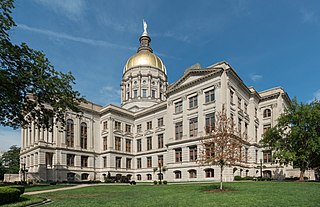
The Georgia State Capitol is an architecturally and historically significant building in Atlanta, Georgia, United States. The building has been named a National Historic Landmark which is listed on the National Register of Historic Places. As the primary office building of Georgia's government, the capitol houses the offices of the governor, lieutenant governor, and secretary of state on the second floor, chambers in which the General Assembly, consisting of the Georgia State Senate and Georgia House of Representatives, meets annually from January to April. The fourth floor houses visitors' galleries overlooking the legislative chambers and a museum located near the rotunda in which a statue of Miss Freedom caps the dome.

The Georgia Trust for Historic Preservation is the United States' largest statewide, nonprofit preservation organization with more than 8,000 members. Founded in 1973 by Mary Gregory Jewett and others, the Trust is committed to preserving and enhancing Georgia's communities and their diverse historic resources for the education and enjoyment of all.

Georgia's state mental asylum located in Milledgeville, Georgia, now known as the Central State Hospital (CSH), has been the state's largest facility for treatment of mental illness and developmental disabilities. In continuous operation since accepting its first patient in December 1842, the hospital was founded as the Georgia State Lunatic, Idiot, and Epileptic Asylum, and was also known as the Georgia State Sanitarium and Milledgeville State Hospital during its long history. By the 1960s the facility had grown into the largest mental hospital in the world. Its landmark Powell Building and the vast, abandoned 1929 Jones Building stand among some 200 buildings on two thousand acres that once housed nearly 12,000 patients.

The Savannah Historic District is a large urban U.S. historic district that roughly corresponds to the pre–Civil War city limits of Savannah, Georgia. The area was declared a National Historic Landmark District in 1966, and is one of the largest urban, community-wide historic preservation districts in the United States. The district was established in recognition of the Oglethorpe Plan, a unique model of urban planning begun in 1733 by James Oglethorpe at Savannah's founding and propagated during the first century of the city's growth.
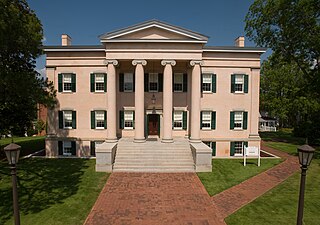
Georgia's Old Governor's Mansion is a historic house museum located on the campus of Georgia College & State University (GCSU) at 120 South Clarke Street in Milledgeville, Georgia. Built in 1839, it is one of the finest examples of Greek Revival architecture in the American South, and was designated a National Historic Landmark for its architecture in 1973. It served as Georgia's executive mansion from 1839- 1868, and has from 1889 been a university property, serving for a time as its official president's residence. It is an accredited museum of the American Alliance of Museums and in 2015 was named an affiliate of the Smithsonian Institution.
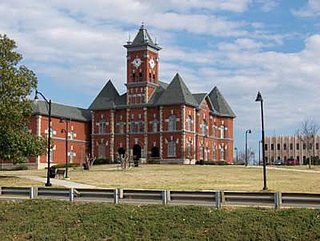
Jonesboro Historic District in Jonesboro, Georgia is a historic district that was listed on the National Register of Historic Places (NRHP) in 1972.

Bruce & Morgan was an American architectural firm based in Atlanta. It was established in 1882 as the partnership of architects Alexander Campbell Bruce (1835-1927) and Thomas Henry Morgan (1857-1940).

Peachtree Park is a neighborhood in the Buckhead Community of Atlanta, Georgia.

Atkinson Hall is a historic building at Georgia College in Milledgeville, Georgia. Atkinson Hall was constructed in 1896. It was saved from demolition in 1978 by alumni, community support, faculty, and students. The building was home to the college's J. Whitney Bunting College of Business and is named for William Y. Atkinson and his wife, Susan Cobb Milton Atkinson. Susan Atkinson was involved in advancing women's education after communicating with her journalist friend, Julia Flisch. Atkinson persuaded her husband, a state legislator from Meriwether County, Georgia, to create legislation establishing Georgia Normal & Industrial College in 1889. The building was added to the National Register of Historic Places on January 20, 1972.

The Old State Capitol is located in Milledgeville, Georgia. It was added to the National Register of Historic Places on May 13, 1970. It is located on Greene Street and is now a museum. Georgia's original state capitol was in Louisville, Georgia. On December 12, 1804, the state legislature voted to designate Milledgeville as the capital of Georgia. In 1805, $60,000 was appropriated to build a capitol building; and a planned city with elements of Savannah, Georgia, and Washington D.C., was proposed, for centrally-located Milledgeville. Jett Thomas and John B. Scott were the general contractors for the construction work.

Elam–Camp House in Gordon, Georgia is a brick Georgian Revival-style house that was built in 1915. It was designed and built by Robert McMillan, owner of the McMillan Brick Company of Milledgeville.
Sweetwater Inn is a property in McDuffie County, Georgia, near Thomson, that is listed on the National Register of Historic Places. It is located off Georgia Highway 17 on Old Milledgeville Road. The structure on the property functioned as a residence and an inn. It was built in 1826. It was added to the National Register of Historic Places on May 2, 1985. At the time of its National Register listing, it was not in use.

Westover is a historic Southern plantation in Milledgeville, Georgia, United States.

Westover is a historic mansion on a Southern plantation in Milledgeville, Georgia, US.
Charles Blaney Cluskey was an Irish architect active from the 1830s to the start of the Civil War, and therefore he is recognized as an antebellum architect. He is reputed to be the initiator of the Greek Revival–style in the south, and his commissions, both public and private, can still be seen in Augusta, Milledgeville and Savannah, Georgia.
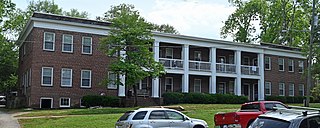
The Fowler Apartments, located at 430 W. McIntosh St. in Milledgeville, Georgia, were built in 1930. They were listed on the National Register of Historic Places in 1997.
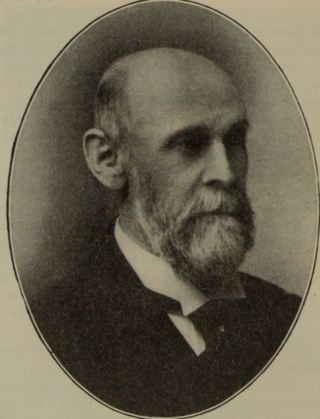
Alexander Campbell Bruce, also known as A. C. Bruce, was an American architect based in Atlanta, Georgia.

The Louisville Commercial Historic District, in Louisville, Georgia, is a historic district which was listed on the National Register of Historic Places in 1994.
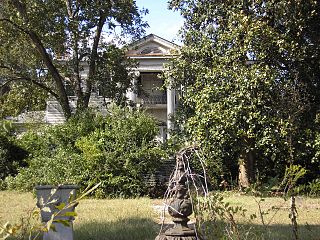
The Samuel Rockwell House is a historic house in Milledgeville, Georgia. Built in 1838, the building was at one point the summer house of Georgia Governor Herschel Vespasian Johnson. The building was damaged by a fire in 1969 and was added to the National Register of Historic Places in 1978.























